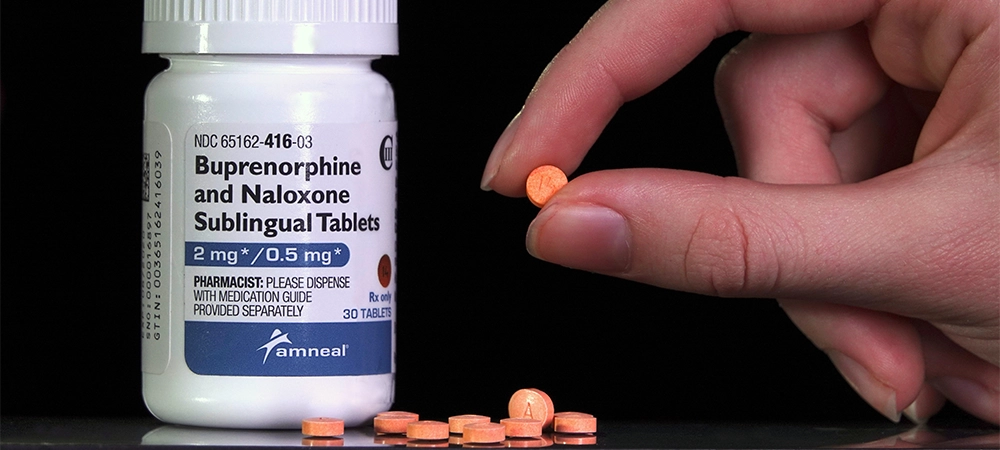The grip of opioid addiction is relentless, its tendrils reaching deep into your life, leaving you feeling trapped and desperate for a way out. The road to recovery seems like a maze of choices, with unfamiliar terms like “methadone,” “Suboxone,” and “Vivitrol” swirling around, each promising relief but shrouded in uncertainty. It’s easy to feel overwhelmed and unsure of which path is right for you.
Medication-assisted treatment (MAT) is a cornerstone of our approach, and we offer a range of options to help you break free from the cycle of addiction. Methadone, Suboxone (buprenorphine/naloxone), and Vivitrol (naltrexone) are three of the most common medications used in MAT, each with unique benefits and considerations.
In this guide, we’ll break down the science behind these medications, explore their effectiveness and safety profiles, and help you understand which option might best fit your recovery journey.
Understanding Opioid Addiction & Medication-Assisted Treatment (MAT)
Opioid addiction is a complex disease that affects both the brain and body. When opioids like heroin, fentanyl, or prescription painkillers are used, they bind to opioid receptors in the brain, triggering a surge of dopamine – a neurotransmitter associated with pleasure and reward. This flood of dopamine reinforces the desire to use opioids again and again, leading to dependence and addiction.
Over time, the brain adapts to the presence of opioids, requiring higher doses to achieve the same effect. This is known as tolerance. When opioid use is stopped abruptly, the body experiences withdrawal symptoms, which can range from uncomfortable to severe. These physical and psychological symptoms often drive individuals to relapse to find relief.
MAT is a proven approach to addressing the challenges of opioid addiction. It involves the use of medications, like methadone, Suboxone, or Vivitrol, in conjunction with counselling and behavioural therapies. MAT is not a quick fix or a “crutch” – it’s a valuable tool to help individuals stabilize their lives, regain control, and work towards lasting recovery.
The primary goals of MAT are:
- Reduce Cravings: MAT medications work by interacting with the same brain receptors as opioids, but in a controlled and regulated way. This helps to reduce cravings and the intense urge to use, making it easier to resist relapse.
- Prevent Withdrawal: MAT medications can alleviate the physical and psychological symptoms of withdrawal, making the detox process more manageable and reducing the risk of relapse during this vulnerable time.
- Support Long-Term Recovery: By stabilizing brain chemistry and reducing cravings, MAT can help individuals engage more fully in counselling and therapy, build healthy coping mechanisms, and develop a sustainable foundation for long-term recovery.
MAT is not a standalone solution but a vital component of a comprehensive treatment plan. By addressing the physical and psychological aspects of addiction, MAT empowers individuals to break free from the grip of opioids and rebuild their lives.

Methadone: A Deep Dive
Methadone is a long-acting synthetic opioid medication used in MAT. It interacts with the brain’s opioid receptors in a similar way to other opioids. Still, its effects are carefully controlled and regulated to prevent the highs and lows associated with addiction. This helps to reduce cravings, suppress withdrawal symptoms, and block the euphoric effects of other opioids.
Effectiveness
Methadone is a well-established treatment for opioid addiction, with decades of research supporting its effectiveness. Studies have shown that methadone can:
- Reduce opioid use: Individuals on methadone treatment are significantly less likely to use illicit opioids compared to those not receiving treatment.
- Lower overdose risk: Methadone can reduce the risk of fatal overdose by up to 70%, making it a life-saving intervention for many.
- Decrease criminal activity: Studies have also demonstrated a correlation between methadone treatment and reduced criminal activity associated with drug use.
Safety
Methadone is generally safe when taken as prescribed under medical supervision. However, like any medication, it can have potential side effects, including:
- Constipation
- Drowsiness
- Nausea
- Slowed breathing (in high doses)
Methadone must be taken under the supervision of a healthcare professional to ensure proper dosing and minimize the risk of overdose. Regular monitoring and dose adjustments are necessary to maintain a safe and effective treatment plan.
Who is Methadone Suitable For?
Methadone may be a good option for individuals who:
- Have a severe opioid addiction
- Have a history of long-term opioid use
- Have not responded well to other treatment options
- Prefer a highly structured treatment program with daily clinic visits
Suboxone (Buprenorphine/Naloxone): An Alternative Approach
Suboxone is a unique medication that combines two key ingredients: buprenorphine, which eases cravings and withdrawal symptoms, and naloxone, which acts as a safety net to discourage misuse.
Buprenorphine interacts with the brain’s opioid receptors uniquely, offering a gentler approach compared to potent opioids like heroin or methadone. It partially activates these receptors, providing relief from cravings and withdrawal symptoms but with a milder impact on the brain’s reward system.
Naloxone acts as a safeguard against Suboxone, blocking the effects of other opioids and discouraging misuse of the medication.
How Does Suboxone Differ from Methadone?
Unlike methadone, Suboxone is available as a sublingual film or tablet, allowing for more flexible dosing and less frequent clinic visits. It also has a “ceiling effect,” meaning that increasing the dose beyond a certain point does not produce additional opioid effects, reducing the risk of overdose compared to methadone.
Effectiveness
Suboxone is effective in reducing opioid use, cravings, and withdrawal symptoms. It can also improve treatment retention, as individuals are more likely to stay in treatment when they experience fewer side effects and have more flexibility in their medication schedule.
Safety
Suboxone is generally safe when taken as prescribed, but it can have potential side effects, including:
- Headache
- Nausea
- Constipation
- Insomnia
The presence of naloxone in Suboxone helps to deter misuse and reduce the risk of overdose. However, it’s essential to take Suboxone under the supervision of a healthcare professional to ensure safe and effective treatment.
Who is Suboxone Suitable For?
Suboxone may be a good option for individuals who:
- Have a moderate to severe opioid addiction
- Prefer a less structured treatment option with less frequent clinic visits
- Have concerns about the potential side effects of methadone
- Are pregnant or breastfeeding (under careful medical supervision)
Vivitrol, also known as naltrexone, offers a distinct approach to opioid addiction treatment. Unlike methadone and Suboxone, which activate opioid receptors to varying degrees, Vivitrol works as an opioid antagonist. This means it blocks opioid receptors in the brain, preventing other opioids from binding to them and producing their effects.
Related Article: What’s the Difference Between Methadone and Suboxone?

How Does Vivitrol Differ?
The key difference lies in its mechanism of action:
- Methadone and Suboxone: These medications are agonists or partial agonists, meaning they activate opioid receptors to a certain extent, reducing cravings and withdrawal symptoms while still providing some opioid effects.
- Vivitrol: This medication is an antagonist, meaning it completely blocks opioid receptors, preventing any opioid effects from occurring.
Vivitrol is administered monthly, eliminating the need for daily medication management.
Effectiveness
Vivitrol is effective in preventing relapse and promoting abstinence from opioids. By blocking the effects of opioids, Vivitrol removes the rewarding sensations associated with drug use, making it less appealing and reducing the risk of relapse. Studies have demonstrated that Vivitrol can significantly increase the time individuals remain opioid-free compared to those not receiving treatment.
Safety
Vivitrol is generally safe when used as directed, but it does carry some potential side effects, including:
- Nausea
- Headache
- Dizziness
- Fatigue
- Injection site reactions
It’s crucial to note that individuals must be completely opioid-free (typically for 7-14 days) before starting Vivitrol. Otherwise, they may experience severe withdrawal symptoms.
Who is Vivitrol Suitable For?
Vivitrol may be a good option for individuals who:
- Have completed detox and are physically stable.
- Are highly motivated to remain opioid-free.
- Prefer a monthly injection over daily medication.
- Have a history of relapsing on other forms of MAT.
- Are looking to avoid the potential side effects associated with methadone or Suboxone.
It’s important to note that Vivitrol is not suitable for everyone, and the decision to use it should be made in consultation with a healthcare professional who can assess individual needs and circumstances.
Making an Informed Decision: Which Treatment is Right for You?
Choosing the right medication for opioid addiction treatment is a deeply personal decision that requires careful consideration of individual factors and preferences. While methadone, Suboxone, and Vivitrol have all demonstrated effectiveness in treating opioid addiction, they differ in their mechanisms of action, dosing schedules, and potential side effects.
The Right Choice for You
There’s no single “best” medication for everyone. The optimal choice depends on various factors, including:
Severity of addiction: Methadone may be more suitable for severe addictions, while Suboxone might be a better fit for moderate cases.
History of opioid use: Long-term opioid users may benefit from methadone’s long-acting effects, while those with a shorter history might prefer Suboxone’s flexibility.
Individual preferences: Some individuals may prefer the structure of daily supervised dosing with methadone, while others might value the flexibility of Suboxone or Vivitrol’s monthly injection.
Medical history: Certain medical conditions may make one medication more suitable than others.
Related Article: The Different Types of Addiction Treatment in Ottawa

Your Partner in Recovery
At Addiction Rehab Toronto, we understand that choosing the proper medication is a crucial step in your recovery journey. Our healthcare professionals are here to guide you through the decision-making process.
We offer comprehensive assessments to evaluate your needs, preferences, and medical history. Based on this assessment, we’ll develop a personalized treatment plan with the most appropriate medication for your situation.
We believe in a collaborative approach to recovery, where you actively participate in your treatment decisions.
Our goal is to empower you with knowledge and support so you can confidently choose the path that leads to lasting freedom from opioid addiction.
Take the first step towards recovery. Contact us today for a confidential consultation and learn how we can help you overcome opioid addiction.







